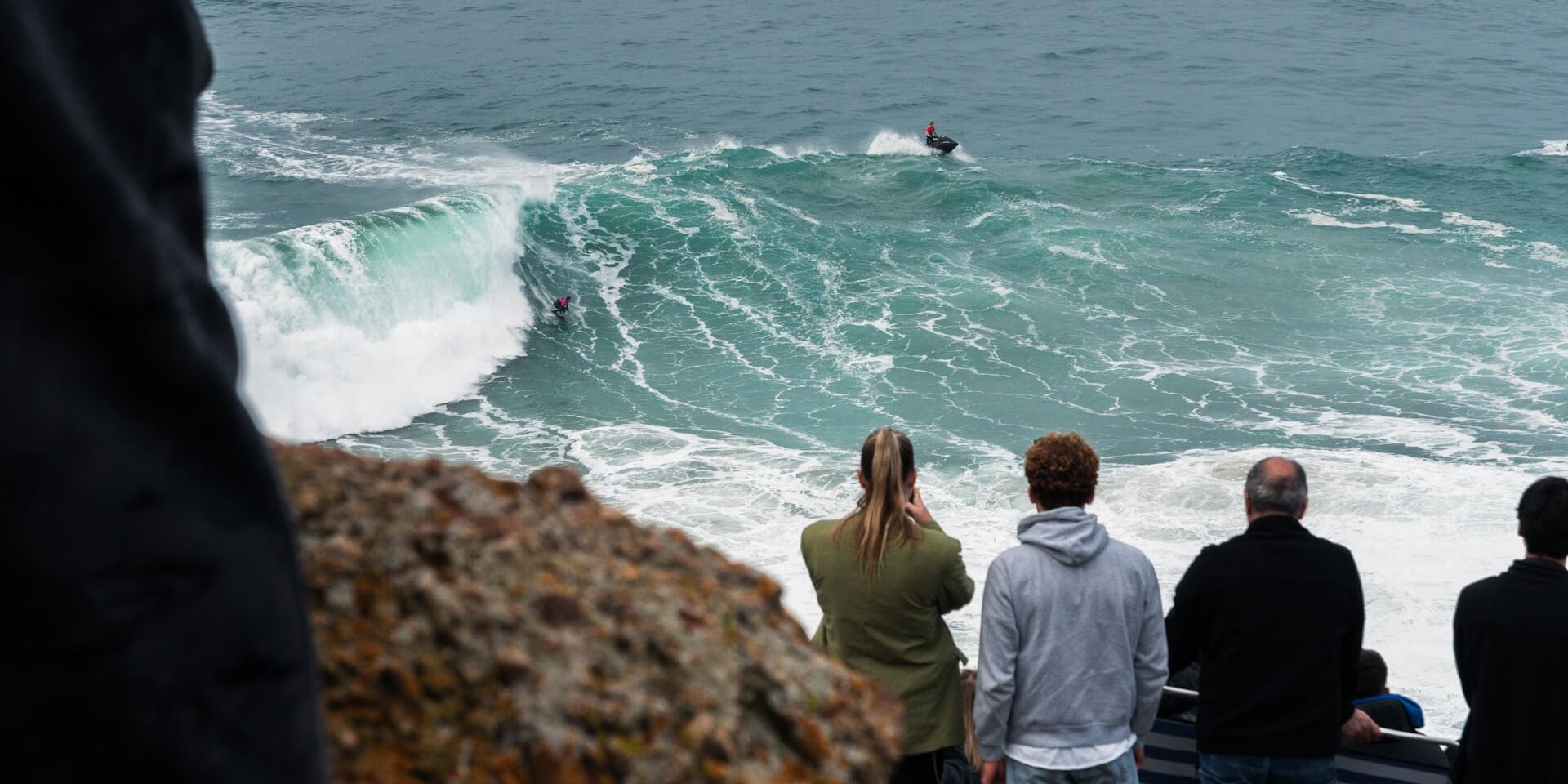The Nazaré waves have achieved worldwide fame, not just among surfing enthusiasts. Their spectacular record size and the fact that they have become a mecca for extreme surfing have made them popular globally, not just among those who practice this sport. They have appeared in general news reports, travel publications, and movies. But why does it happen? What makes them so big?
First of all, keep in mind that these waves are not safe to surf unless you are a great expert with many years of experience and, even then, they are waves that pose a great risk. If you want to surf and enjoy the sea safely, you can improve your technique to face new challenges by having fun with us at the surf school in Fuerteventura surfintrip.com.
Why are the Nazaré waves so big?
The giant size of the Nazaré waves is due to several very relevant factors. It is not something that happens for a single reason but because several factors converge in a way that does not happen in other parts of the planet, hence their exceptionality.
Seabed and orography
The orography of the seabed off the coast of Nazaré is one of the reasons why giant waves are generated. This underwater area is called the Nazaré Canyon. It is an underwater valley or rather a gorge with an uncommon depth, size, and shape.
The Nazaré Canyon is about 5,000 meters deep and extends for about 230 km. Moreover, its shape is not entirely tubular but rather funnel-shaped, narrowing at Praia do Norte.
This is key to generating giant waves in the Nazaré area that have reached heights of 30 meters.
Depth difference between the continental shelf and the Nazaré Canyon
This difference of about 5 km in depth causes the propagation direction of the waves to change. In the area of the Atlantic Ocean located above the canyon, the waves travel very quickly and turn towards the continental shelf, which is much shallower.
The reduction in depth is very rapid, not gradual. This causes the wave to swell spectacularly, reducing its wavelength and amplifying its height.

Intersection between waves in the Nazaré area, Portugal
Another factor influencing the generation of the Nazaré waves is the intersection of two waves.
On one hand, there are the swollen waves generated by the depth change between the Nazaré Canyon and the continental shelf. On the other hand, there are the waves that have passed alongside the canyon but have not crossed it. The intersection between these two types of waves favors a new formation of waves, which are larger than the previous ones.
The counter-wave or water projected from the beach to the sea after the arrival of the wave series is also a factor that increases the height of the Nazaré waves by a few meters, helping to build their giant waves.
Ocean currents and the popular giant Nazaré waves
One factor influencing the height of the waves in any coastal area is how the ocean currents are in that area. In the case of the Nazaré wave area, the water current channels along the coast from north to south. This is the direction of the incoming waves and it is an additional factor contributing to their spectacular height.
As you can see, the reason why the Nazaré waves are giant is the sum of a series of factors that separately influence the size of the wave and that, converging, do so in a spectacular way until they become huge.

